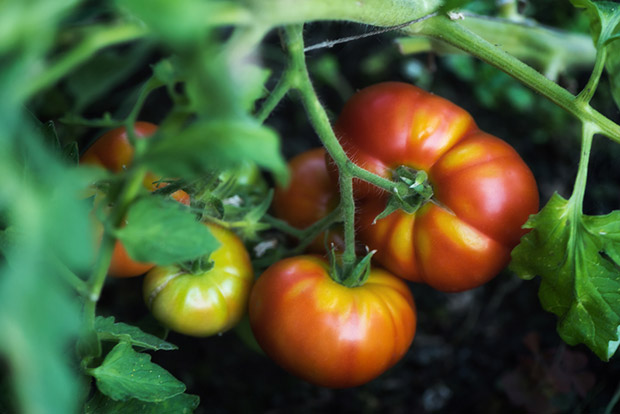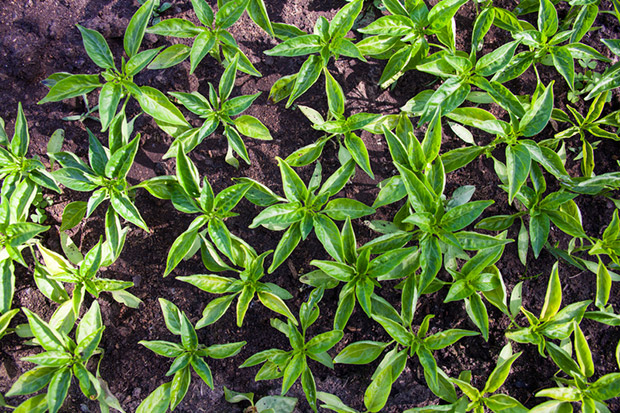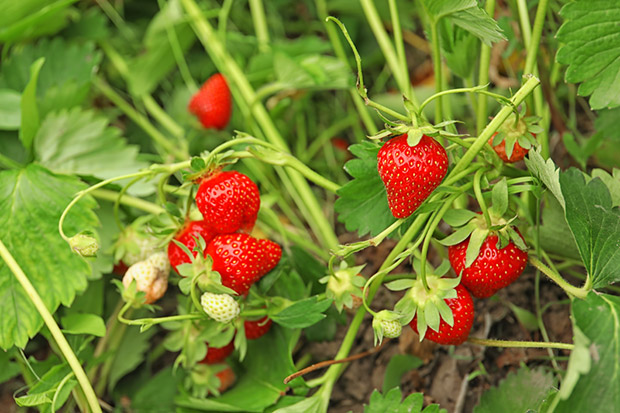Everything to plant, sow and feed for your best end-of-year garden

The end of the year may be upon us, but there is still plenty to do.
Words: Jane Wrigglesworth
1. Watch out for holes in the leaves of grapevines, cherries, and other fruit trees. The 3-5mm long bronze or brown beetle (Eucolaspis brunnea) likes to munch on leaves and can almost defoliate plants if numbers get high. They may also damage the skin of fruit. You might have already found the pale-tan coloured, 5-10mm-long larvae in the soil in your garden. Depending on where you live, the shiny, dark brown beetles hatch from late spring until early summer. It’s often necessary to spray from October-January to keep them at bay.
2. Plant capsicum seedlings if you haven’t already. Capsicums need warmth to flourish, so plant in a sheltered area in full sun. The lower the temperature during flower development, the shorter the fruit. Low temperatures at flowering time can also result in three or even two-loculed fruit as opposed to the usual four locules. If you’ve ever seen a capsicum with a ‘tail’ or pointy end, it usually indicates the plant set its fruit during a cool spell. Water regularly when fruit is developing, as capsicums, like tomatoes, are prone to blossom end rot.

3. Continue to plant seedlings: broccoli, cabbage, cauliflower, courgette, cucumber, eggplant, pumpkin, silverbeet, spring onion, sweetcorn, and tomato.
4. Pinch out the growing tips of new cucumber plants when they produce about eight leaves. Two new leaves will form and the tips of these can also be pinched out once they have eight leaves. This encourages better flowering, and you’ll get more fruit.
5. Keep celery moist. Celery is a water hog, so ensure regular watering for crisp stalks. Plants will thrive with a fortnightly watering of seaweed or fish solution and compost mulch.
6. Feed tomatoes weekly or fortnightly with a liquid fertiliser. Avoid fertilisers high in nitrogen just before and during cropping– too much nitrogen encourages plants to produce leaves at the expense of flowers and fruit. Remove the lower leaves of tomato plants to allow more light to penetrate, improve air circulation, and deter disease. Leave the foliage higher up to protect the developing fruit from the sun.
7. Sow beans, beetroot, carrots, corn, cucumbers, lettuce, radishes, silverbeet, and zucchini directly into the soil.

TIPS FOR STUNNING STRAWBERRIES THIS SUMMER
Spray strawberry plants with a seaweed solution every two weeks to help prevent fungal disease and enhance flavour. Feed with a high-potassium strawberry or tomato fertiliser during flowering and fruiting.
Water deeply, often, in the early morning, three times a week or more if it’s hot and dry – avoid getting water on the leaves. Mulch plants with straw, pea straw or similar. Fruit needs to sit on something clean and dry, otherwise they’re likely to rot..
Love this story? Subscribe now!
 This article first appeared in NZ Lifestyle Block Magazine.
This article first appeared in NZ Lifestyle Block Magazine.
